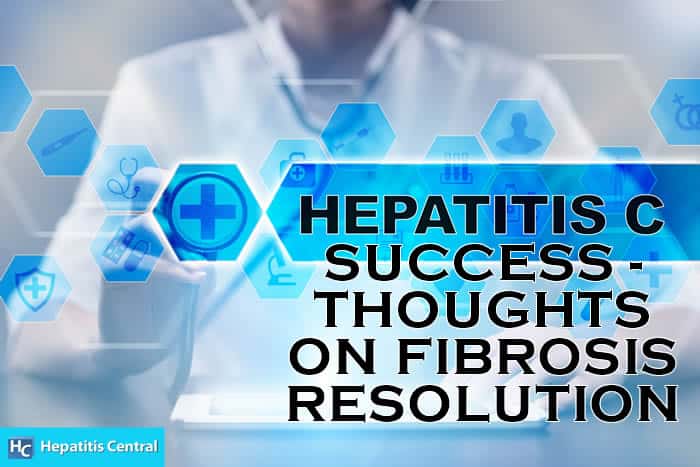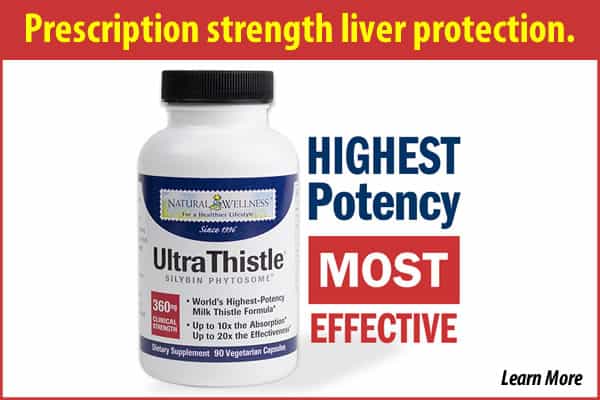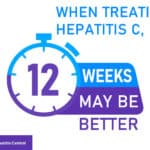Hepatitis C Success – Thoughts on Fibrosis Resolution


There is hope for curing Hepatitis C now that effective treatments are available. Although the new drugs may ‘cure’ someone of Hepatitis C, those affected can still have residual problems from years of being infected with this virus. Viral eradication is typically accompanied by improvements in liver function and liver fibrosis reduction, but the liver can still suffer from cellular damage. Giving those who sustained significant liver damage renewed hope, an increasing body of evidence is demonstrating that liver fibrosis can be reversed (or resolved) once the Hepatitis C virus is eradicated.
What Is Sustained Virologic Response?
Newer medications such as direct-acting antiviral agents – including HCV protease inhibitors, polymerase inhibitors, and NS5A inhibitors – are facilitating a high Hepatitis C treatment success rate. Especially if there are no co-morbidities, today’s antiviral drugs have a rate of success around 95%. When it comes to eliminating the Hepatitis C virus from the body, attaining sustained virologic response (SVR), is the standard measurement. SVR is the absence of detectable Hepatitis C virus in the blood six months after treatment ends. Now that SVR has been reliably reproduced, experts are moving towards investigating fibrosis resolution.
Fibrosis Resolution
Similar to trying to rebuild a ravaged metropolis after a decades-long war, restoring the health of the liver after years of Hepatitis C infection presents a challenge. According to an article published in a 2015 edition of the Journal of Hepatology, the following mechanisms are involved in fibrosis resolution after achieving SVR:
- Shifting the balance in the liver from inflammation to restoration – On a cellular level, this is the change describing when liver cells and neighboring cells transition from a pro-inflammatory environment to an anti-inflammatory environment. Supporting your body with foods and supplements that scavenge free radicals to squelch the inflammatory response is advised.
- Deactivation and elimination of myofibroblasts – The main collagen producing cells in the liver are hepatic stellate cells (HSC) that convert into myofibroblasts. The deactivation of myofibroblasts is key to fibrosis regression. Apoptosis (cell death) of HSC paves the way for improvement in liver tissue and is the focus of anti-fibrotic pharmacology. While a drug to reverse liver fibrosis is not yet a reality, there is evidence supporting an ancient herbal remedy for this purpose. As described in the June 2009 issue of Journal of Hepatology, silybin (a component of milk thistle) inhibits hepatic stellate cells.
- Extracellular matrix degradation – Breaking down liver scars involves degradation of the extracellular matrix. Enzymes known as matrix metalloproteinases (MMPs) are the primary identified substances known to dissolve scarred tissue. Research on MMPs, and how to direct them towards unwanted extracellular matrixes (such as liver fibrosis), is ongoing. Although not involving MMPs, many holistic healthcare providers instruct patients hoping to break down fibrotic tissue to engage in regular cardiovascular activity. In general, their belief is that stimulating systemic circulation via exercise helps mobilize and accelerate an exchange of nutrients among all cells, which breaks down unhealthy tissue accumulation.
3 Ways to Return Your Liver to a Healthy State
Achieving fibrosis resolution after successfully eliminating Hepatitis C is emerging as a top goal in hepatology. Because an approved drug to resolve liver fibrosis is not likely to emerge tomorrow, consider what we know to help return your liver to a healthy state:
- Shift your body’s environment from inflammatory to anti-inflammatory by eating anti-inflammatory foods and abstaining from foods that create inflammation. Find out how the five principles of the anti-inflammatory diet.
- Help your body inhibit HSCs that contribute to collagen production in the liver with a high quality silybin supplement. UltraThistle contains a patented, highly-absorbable form of milk thistle called Silybin Phytosome. Silybin Phytosome combines silybin – the most active and beneficial ingredient in milk thistle which is responsible for 50% to 70% of milk thistle’s therapeutic benefit – at a molecular level with phosphatidylcholine, a phospholipid which is the same material found in cell membranes. Learn more about the world’s highest-potency milk thistle formula.
- Encourage extracellular matrix degradation by engaging in regular cardiovascular exercise.
Once Hepatitis C is eliminated, the constant threat has been neutralized – but there is still damage control to address. Fibrosis resolution is the next step for returning to health, post Hepatitis C infection. There are many potential fibrosis resolution drugs that are currently in clinical development, with safety and efficacy data to be determined. In the meantime, consider countering the mechanisms of fibrotic tissue with anti-inflammatory foods, silybin extract, and good, old-fashioned exercise.
http://www.journal-of-hepatology.eu/article/S0168-8278(15)00322-0/fulltext, Mechanisms of Liver Fibrosis Resolution, F Tacke, et al, Retrieved February 25, 2018, Journal of Hepatology, October 2015.
https://www.ncbi.nlm.nih.gov/pmc/articles/PMC5339475/, Reversal of liver cirrhosis: current evidence and expectations, The Korean Journal of Internal Medicine, YK Jung, et al, Retrieved February 25, 2018, March 2017.
https://www.ncbi.nlm.nih.gov/pubmed/19398228, Silybin, a component of sylimarin, exerts anti-inflammatory and anti-fibrogenic effects on human hepatic stellate cells, Trappoliere, M, et al, Retrieved February 25, 2018, Journal of Hepatology, June 2009.
https://www.ncbi.nlm.nih.gov/pubmed/29385311, Viral eradication and fibrosis resolution in post liver transplant cholestatic hepatitis C, Mauro E, et al, Liver Transplantation, January 2018.
https://www.sciencedirect.com/science/article/pii/S0167488909002407, Matrix metalloproteinases: What do they not do? New substrates and biological roles identified by murine models and proteomics, D Rodriguez, et al, Retrieved February 25, 2018, Biochemica et Biophysica Acta, January 2010.
https://www.sciencedirect.com/science/article/pii/S166557961730039X, Mechanisms involved in liver damage resolution after hepatitis C virus clearance, TB Salas-Vilalobos, et al, Retrieved February 18, 2018, Medicina Universitaria, April-June 2017.








